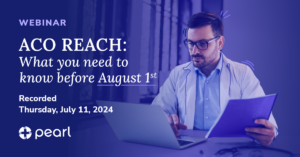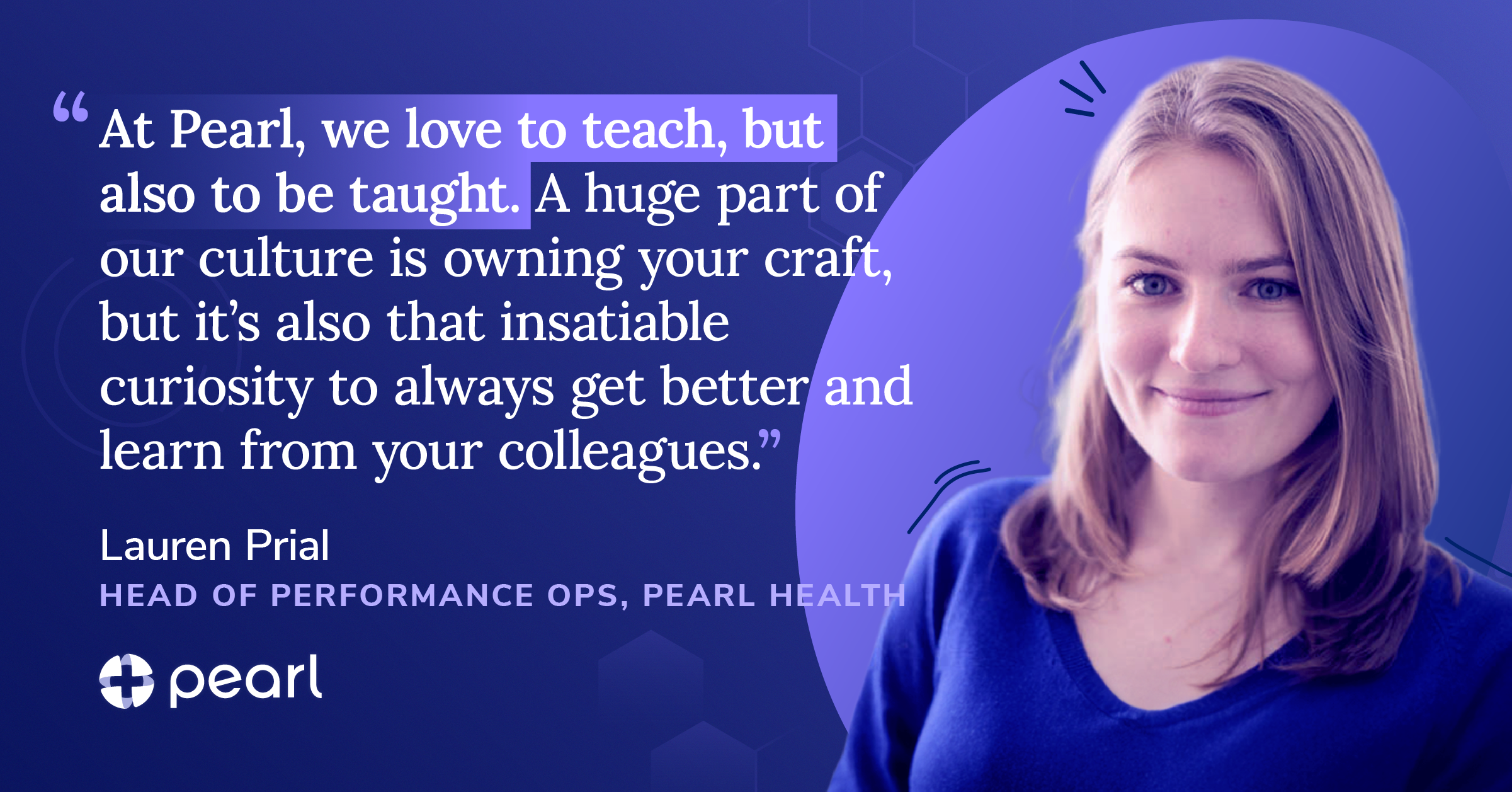As Pearl Health continues to grow, it’s important to not lose sight of the values that make us who we are. Our employees are the lifeblood of this company, and their values and contributions are ultimately what make us successful. That’s why I sat down with Lauren Prial, our Head of Performance Operations, to learn more about her experience at Pearl Health and the values she brings to the team.
Could you tell us a bit about Performance Operations and what your team is focused on?
My team is responsible for helping our practices perform in value-based care — we are the operational extension of the Pearl Platform. We develop services and operational approaches to enable our clients to succeed in these programs.
What convinced you to join Pearl on its mission?
Are these programs complicated? Is it difficult for practices to get into value-based care?
We see a range of experience with value-based care across our customer base. But in general, as a baseline, the programs are super complicated. And one of the things that Pearl does well is to distill that complexity in a way that practices trust us to take care of it. It will be on our ‘worry list,’ so to speak, but we’re able to streamline the complexity and present elegant solutions to what would otherwise be a nebulous environment. A huge part of what we do is remove the barriers for practices to participate in these programs. Then once they’re able to participate, that’s where performance comes into play.
As someone who works closely with Pearl’s provider partners, what do you love most about working with primary care physicians?
What I really like about working with primary care practices is the potential for impact. The core part of our thesis is that the PCP can be the quarterback of a patient’s journey through the healthcare system. Traditionally, they haven’t been enabled or empowered to fulfill that role, but the potential is there. And when I interact with our practices primarily from a research perspective, I can understand what their problems are and how we can better serve them through operations or services. And, when you see a desire to have that downstream impact, you wonder how can we extend the reach of these practices?
What are some of the negative things that PCPs are experiencing?
One major pain point, which has a ton of root causes, is practice burnout. There are just too many things to do in not enough time. And not only that, but they haven’t been compensated for a lot of the impact that they have, because everything is so anchored to claims. You have a visit, you submit a claim for it, you get paid for that claim. There’s so much work that goes on behind the scenes to connect the dots along the patient journey. It’s just that typically the economics haven’t been oriented around rewarding that work. So that’s where I think a lot of the burnout comes in — not just that there’s too much to do in the confines of a day, but also that the incentives weren’t really set up to reward practices that go above and beyond.
What would you say are the two main challenges for PCPs today?
The two main challenges that come to mind for me, for our practices would be 1) how can we extend the reach of a primary care practice? and 2) how can we facilitate a patient-centric model of care?
Often there’s limited visibility and connection that a primary care practice has with other nodes in the patient’s health care journey. An example is specialist care for someone who has multiple chronic conditions — often these patients will actually receive the majority of their care via specialists. If the PCP doesn’t have tight connection points with those other providers, then they’ll be limited in their ability to direct care and have the impact they should.
The other thing is that a ton of data is presented to providers, but there isn’t a clear action and it typically isn’t patient-centric. So, how do you take lists of things to do, care gaps to close, etc. and translate that into a patient-centric model? At Pearl, we often talk about shifting that paradigm through our product and services.
Our Technology
What would you say you love most about working at Pearl?
What I love most about Pearl and makes me really, really proud to be a part of the team is that at Pearl we love to teach, but also to be taught. A huge part of our culture is owning your craft, but it’s also that insatiable curiosity to always get better and learn from your colleagues — professionally as well as personally. Everyone has different passions that sort of bleed into our day-to-day work environment. It is awesome and is one of the things that is unique among peer organizations.
What we’re doing here is exciting and energizing. It’s hard. We’re not trying to chip away at easy or small problems, but it’s because of the team we have and the goals that we’re oriented around that we can tackle some big problems in healthcare.
Overall, my conversation with Lauren was a reminder of the importance of staying true to our values as a company. By fostering teamwork, innovation, empathy, and data-driven decision making, we can continue to provide the best possible outcomes for our provider partners. And by encouraging continuous learning and development, we can ensure that we are always staying ahead of the curve in a rapidly evolving industry. At Pearl, we’re grateful to have Lauren on our team, and I’m excited to see how she continues to help Pearl Health grow and succeed in the future.






